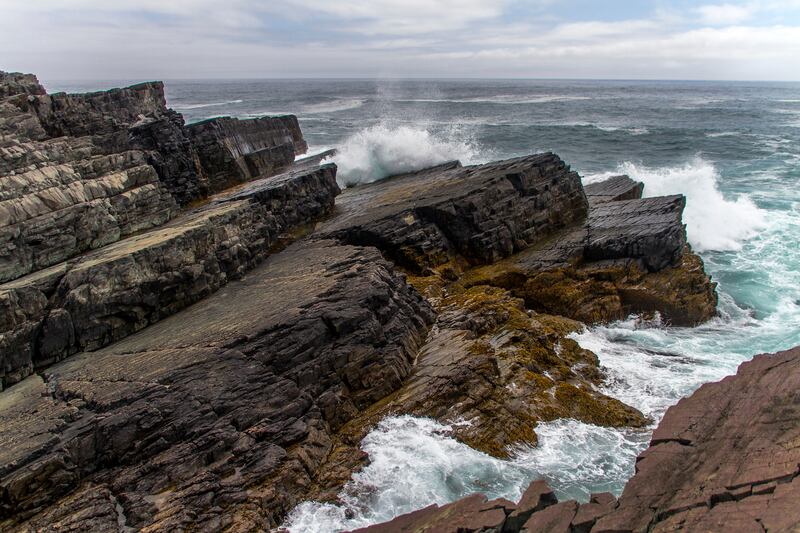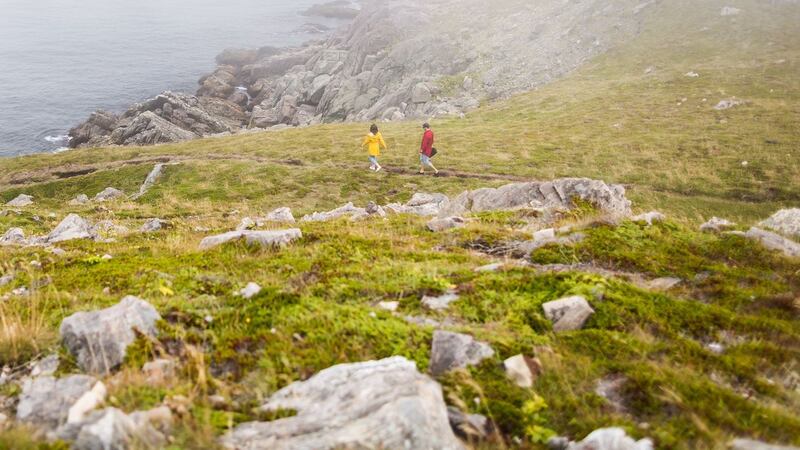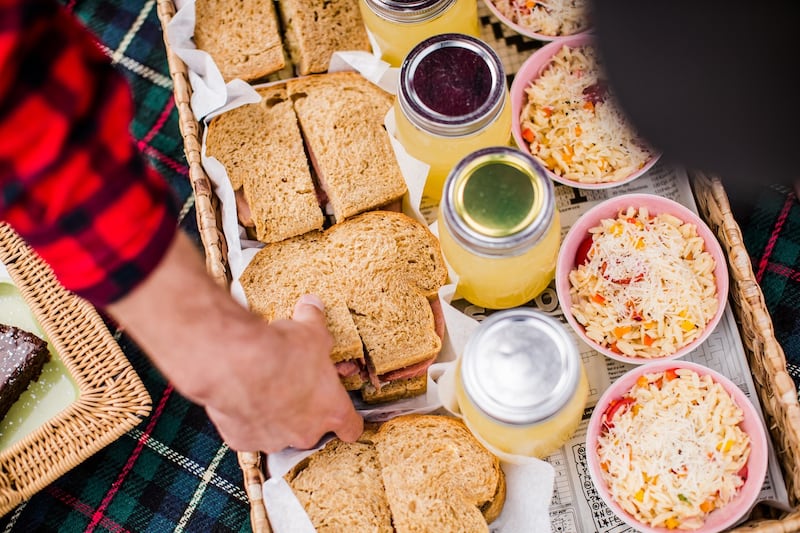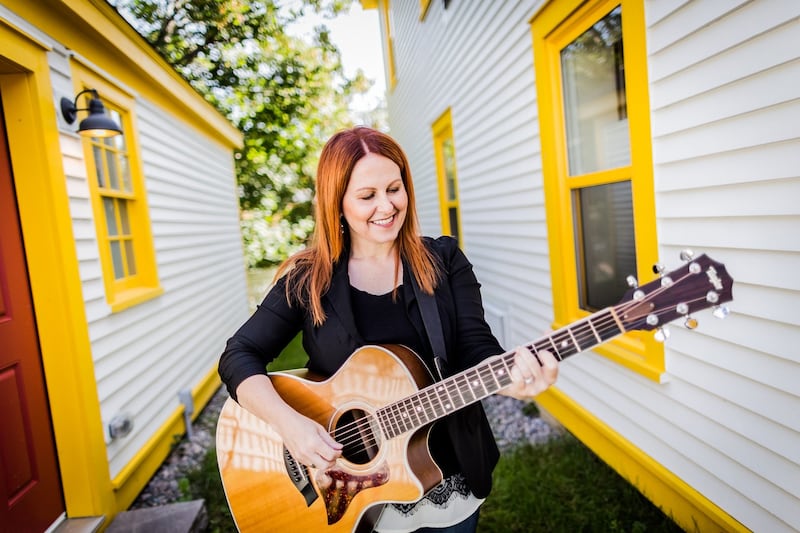“It looks like the edge of the world out here,” my wife, Holly, mused, not disapprovingly. Our picnic blanket was spread out on a high cliff, with green-capped rock stretching alongside us, endless blue ocean in front. It was the first of many leisurely breaks we would take on our slow road trip through Newfoundland’s Avalon Peninsula.
We were as east as you can get in North America (not counting Greenland), so the edge-of-the-world comparison was apt. But I couldn't stop comparing it to another, more earthly location. Over and over again, as we drove down the coast I found myself marvelling, "It looks just like Ireland."
What sets this section of Newfoundland apart from other Irish enclaves in North America is how the remote location fostered a culture that, centuries later, is so recognisably Irish yet also distinctly its own
This stretch of Newfoundland shares many links with Ireland, beyond the striking green landscape. This area's Irish heritage dates back to the 1600s, when a fishing colony established by George Calvert (later Lord Baltimore) lured Irish servants and labourers. Over the years, many who came for the fishing season stayed permanently, a migration that boomed during the early 19th century. By that point, "the Irish were virtually the sole occupants of the southern half of the Avalon," wrote John Mannion, a historical geographer who researched the Irish-Newfoundland experience on both sides of the Atlantic.
But what sets this section of Newfoundland apart from other Irish enclaves in North America is how the remote location fostered a culture that, centuries later, is so recognisably Irish yet also distinctly its own. Locals speak with thick brogues that sound more Irish than Canadian, the sounds of fiddle music stream out of the peninsula’s pubs, and the lyrics of well-worn local folk songs depict the prizes and pitfalls of island life. A visitor dropped here out of context might well assume they were in small-town Ireland. Yet many locals have never even met anyone from Ireland, let alone been there.
My wife and I had been searching for an outdoorsy getaway that was close enough to explore in a few days. My mother is from Co Galway, and trips to her rural hometown, filled with rollicking traditional music sessions, have been among my most memorable travels, so I was intrigued by Irish Newfoundland.

We settled on a four-day road trip along the Irish Loop, a 312km route that circles through the dramatic coastline and foggy small towns of the Avalon Peninsula, the road signs along the way marked with shamrocks. The whole thing can be done in a day, but we opted to take the slow route, stopping along the way to chat with locals, listen to live music and follow as many small roads down to the ocean as we felt compelled to take.
Our trip took place before the pandemic. For most of the past year and a half, this remote stretch of land has been even more isolated than usual. Not only did Canada shut its borders to United States visitors, but Newfoundland and Labrador also barred most travellers from other Canadian provinces from entering until this summer. Overall the province has fared relatively well during the pandemic, with average detected cases hovering around 14 per day in late September. Now Newfoundland, like the rest of Canada, has reopened to fully vaccinated visitors.

On our trip we flew into St John’s, Newfoundland’s capital city, rented a car and headed south. Almost immediately after leaving town, the urban scenery gave way to wide fields of green, and the region’s natural beauty announced itself. Unfortunately we didn’t spot any icebergs, which float down from Greenland during the spring and early summer; we’d been told some were seen as late as mid-July.
But on our first pit stop along Witless Bay, a friendly seal frolicked just a few metres from us. Later on our trip we'd spot several whales, along with a trio of nesting eagles. There are hordes of opportunities to get up close with nature here, from expeditions to see puffins and whales, to glimpses of the caribou herd in Avalon Wilderness Reserve and walks along ancient fossils at Mistaken Point. The East Coast Trail offers 25 hikes of varying difficulty.
For our first expedition, we chose a not-so-challenging hike: the 30-minute walk up to Ferryland Head Lighthouse, built in the 1870s on a narrow spit of land prone to attracting shipwrecks. Based inside the cross-gabled keeper’s house, Lighthouse Picnics prepares delightful lunches served in baskets carried out to the cliffside. Sandwiches of chutney-glazed ham on hearty oatmeal bread, Mason jars filled with iced lemonade, and rhubarb cake with fresh cream (30 Canadian dollars a person, or about €21), make the ends-of-the-Earth setting a little cushier.

After ordering, you’re given a blanket and a flag so the server can bring the meal to your picnic spot of choice. The best part is that they keep this experience extremely limited. (Make reservations far in advance.) So while this perfect picnic spot could easily become a tourist magnet, instead only a handful of families lolled about while we enjoyed our lunch. And like almost everywhere we visited on the coast of Newfoundland, social distancing is hardly difficult.
After the hike back to the small town of Ferryland, we strolled through the Colony of Avalon, where an active archaeological dig has unearthed elements of Calvert's 400-year-old settlement, including a cobblestone street and the remnants of a bakery/brewhouse. (Admission, including access to historical exhibits in the visitor centre and a re-created 17th-century kitchen, is 16 Canadian dollars, or just over €11. The visitor centre, like the Lighthouse Picnics, is only open June through September, but if you get a nice autumn day you can still stroll through the site, then hike down the Ferryland Lighthouse Trail – bring your own picnic and expect an even more remote experience this time of year, when visitors are fewer and further between.)
From there we continued our slow drive down the coast, stopping in the town of Trepassey to spend the night at the Convent Guesthouse. From 1882 through 2010, this spot housed disciples of Nano Nagle, the Co Cork -born founder of the Presentation Sisters, an order of nuns with a focus on educating women. The thoroughly modern, squeaky-clean premises now feature photographs of the nuns who lived here on the walls, and each guest room is named for a different sister. (The Convent Guesthouse closed for 2020 and 2021 but plans to reopen in 2022; nightly rates for rooms begin at 129 Canadian dollars, or about €90.)

Just across the way at Edge of the Avalon Inn, we were pleased to find a Friday-night concert from a singer-songwriter named Jackie Sullivan and her performing partner, Karla Pilgrim. Sullivan, who grew up on the Avalon Peninsula, attests she “was born and raised on Irish music”.
Given her lilting accent, you could have easily convinced me she was a distant cousin of mine raised in Galway, but she has never even been to Ireland and recalls that, “as a little girl, I don’t think I had ever met anybody from Ireland.” Yet she said Irish music was omnipresent in her childhood home, from Mary Black and Christy Moore on records, to her grandmother’s memorable rendition of Galway Bay.
Whenever I meet Irish people, they don't feel like strangers to me. We talk the same, we have the same music, the same humour, that same fire and resiliency. I just feel like I know them
“Whenever I meet Irish people, they don’t feel like strangers to me,” Sullivan said. “We talk the same, we have the same music, the same humour, that same fire and resiliency. I just feel like I know them.”
Sullivan sings an assortment of Irish classics, like The Fields of Athenry, mixed in with her own original songs, and, as they always do at any proper singsong in my mother’s hometown, Dunmore, a bit of Johnny Cash and country, too. The full-house crowd was a diverse mix of ages: Sullivan introduced her 94-year-old great-aunt, Joan, while Pilgrim’s baby boy fought off sleep at a back table. Being there reminded me of what I love most about small-town Ireland: people of all ages gathered in a pub, all mixing together and singing along to the crowd-pleasing music. Sullivan closed with The Wild Rover, the clap-along folk song that my Uncle Tommie always pulls out at gatherings in Dunmore.

After pausing during the pandemic, Newfoundland’s music scene started to come back this spring, with live pub sessions (including at Edge of the Avalon, which closes on October 31st for the season) returning alongside some of the area’s many annual festivals.
“Live music is happening on a regular basis, and it’s so wonderful, because music is such a huge part of our culture,” Sullivan told me in a recent email. “It was so nice to be able to get back performing live in front of real people. I missed it so much.”
Trepassey is more or less the midpoint of the Irish Loop, and as we continued west from there the road got a little rougher, the Shamrock road signs tattered and the scenery more barren. Our next stop was St Vincent’s Beach, a wide expanse of pebbly waterfront where the main attractions are the whales – because the water is deep near the shore, they often chase small capelin fish right up to the beach. Locals told us more than 20 whales at a time have been spotted here at times; we were less lucky, sighting just a few from a distance, yet we had a lovely day lounging on the beach and watching the seabirds dive down to catch the fish themselves.
When we had had enough sun, we popped in for a pint at the Claddagh Inn, another convent-turned-guesthouse where the former chapel has been repurposed as Padraig's Folly, billed as Newfoundland's smallest pub. The supremely cosy space has just one table by the window, one small booth lined with repurposed pews and kneelers from the chapel and Fighting Irish Red Ale from St John's YellowBelly Brewery on tap. (The Inn closed for the 2021 season because of the pandemic and will reopen in spring 2022; rooms from 140 Canadian dollars, or about €97.)

For our last afternoon on the Irish Loop we doubled back to Calvert, just north of Ferryland, where Sullivan's Songhouse is perched near the top of a steep drive, the front porch offering sweeping views out over Calvert Bay and its towering trees. But the action was in the kitchen, where the host Sean Sullivan welcomes guests for a traditional singsong (25 Canadian dollars, or about €17.50, per person) twice a week.
I’d booked two seats here before running in to Jackie Sullivan in Trepassey, and it turns out they are from the same Sullivan clan – his father and her grandfather are brothers. With folding chairs set up in a simple wood-panelled kitchen, Sean Sullivan strummed guitar while his colleague Sheldon Thornhill paraded around with an accordion. There were a handful of tourists, but it was mostly neighbours, childhood friends and friends of friends who explained multiple degrees of connections while introducing themselves.
The night in the pub was like a mirror image of a kitchen session in Ireland, with feet tapping, those who were so inclined getting up to dance, and everyone singing along to songs that sounded like Ireland yet were just a bit different
There were some standard Irish ballads, but many of the songs were Newfoundland originals, and nearly every guest joined in for the choruses of well-loved local tunes like Saltwater Joys. (“This island that we cling to has been handed down with pride/ by folks that fought to live here, taking hardships all in stride). It was like a mirror image of a kitchen session in Ireland, with feet tapping, those who were so inclined getting up to dance, and everyone singing along to songs that sounded like Ireland yet were just a bit different.
Although Sullivan is currently not hosting visitors in his pint-size kitchen, he hopes health conditions will allow the Songhouse to resume in the spring. “We decided not to go outdoors because we love the intimacy and atmosphere that the smaller kitchen provides,” he wrote in an email. “That was the concept since inception and I hope we don’t have to veer from that.”
Music is still plentiful throughout the region, although as the weather turns colder you're more likely to find cultural events in St John's than down the coastline. The capital has regular sessions at rollicking pubs like O'Reilly's Irish Newfoundland Pub, where there's live music every night, and Jackie Sullivan will perform there on November 17th, as part of a series showcasing women musicians. October also brings the St John's International Women's Film Festival and the Festival of New Dance.

At the end of our drive we spent our last night in Quidi Vidi, a historic fishing village in St John's. The main draw here was dinner at Mallard Cottage, chef Todd Perrin's standout restaurant set in one of the oldest remaining examples of an Irish-Newfoundland vernacular wooden home. Built for a fishing family in the early 19th century, the space is thoughtfully preserved, with low wood-beam ceilings and a central brick fireplace.
Just across the street, we slept at the Inn by Mallard Cottage, housed in two new buildings with rustic-chic decor designed to match the ambience of the original (rooms from 279 Canadian dollars, or about €194).
The menu at the restaurant – which, like the Cottage, is currently open – changes daily. Dinner came on mismatched antique serving ware that looks straight out of an Irish granny's china cabinet. The heartwarming food was certainly modern – crispy-skin cod is served with confit potato, kale and pesto; the halibut came with chickpeas and garam masala. But after enjoying a lovely meal by the fireplace, then strolling along the timeless harbour, it was easy to see why those early fishermen chose to call this scenic spot home – and why so many after them, Irish and otherwise, have been drawn here since. – This article originally appeared in The New York Times
















